Can a Service Dog also be a Therapy Dog

Although they both offer vital services, a service dog and a therapy dog are not the same. These two types of dogs are not afforded the same federal rights to public access under the Americans with Disabilities Act (ADA). They provide very different services for people. On rare occasions, however, a Service Dog can also be a Therapy Dog. But to understand why this is not a common situation, we first need to clarify the differences between a service dog and a therapy dog.
What is a Service Dog?
The ADA defines service dogs as dogs trained to work or complete tasks for people with a disability. The work that a service dog performs must directly relate to their owner’s disability. In the case of service dogs, their presence is protected under federal ADA law.
As examples, service dogs may function as guides for people who are visually impaired or pull a wheelchair for someone with mobility problems. Some service dogs obtain life-saving medication when their diabetic owners are incapacitated. The tasks that service dogs fulfill are activities that a person with a disability would not be able to do independently, thus making a service dog an essential part of their daily life.
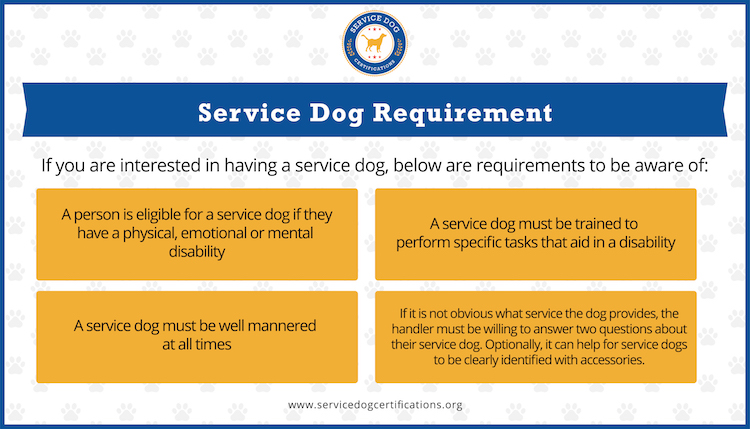
What is a Therapy Dog?
A therapy dog accompanies its owners to hospitals, schools, or nursing facilities to provide the general service of providing comfort, affection, and a sense of well-being. Although a therapy dog has an owner, they help other people by spending time interacting with them. Many hospitals now have therapy dogs to help ease the pain and anxiety of being in a hospital. These therapy dogs spend time with various patients, serving to make their time there a little brighter.
Research shows that the presence of animals can reduce stress and change physiological responses, like lower blood pressure and heart rate. Therapy dogs not only bring affection, but they may improve the physical well-being of patients, making them more likely to recover from illness.
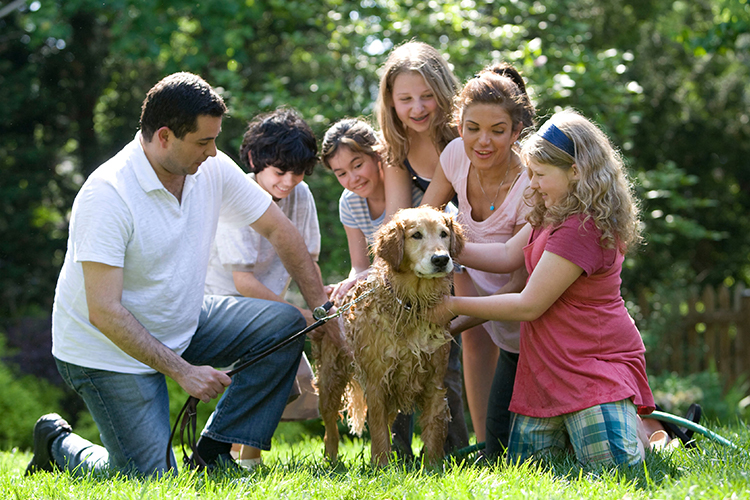
A Service Dog and Therapy Dog
Because service dogs provide an essential service to their owner, they’re almost always on the job. Service dogs receive training to be alert to the needs of their owner and to perform particular tasks. This extreme focus is why it is generally frowned upon to pet or engage with a service dog that doesn’t belong to you. Interacting with a service dog can distract them from doing their jobs well, which might endanger their owner.
Therapy dogs, however, are continually interacting when they do their jobs. They approach various people in hospitals and schools and allow these people to pet and cuddle with them. This interaction is the opposite of the strict concentration that a service dog requires.
Despite the significant differences between a service dog and a therapy dog, a dog can technically be both. However, it takes a very talented—and extremely patient—dog to fulfill both roles.
ServiceDogCertifications
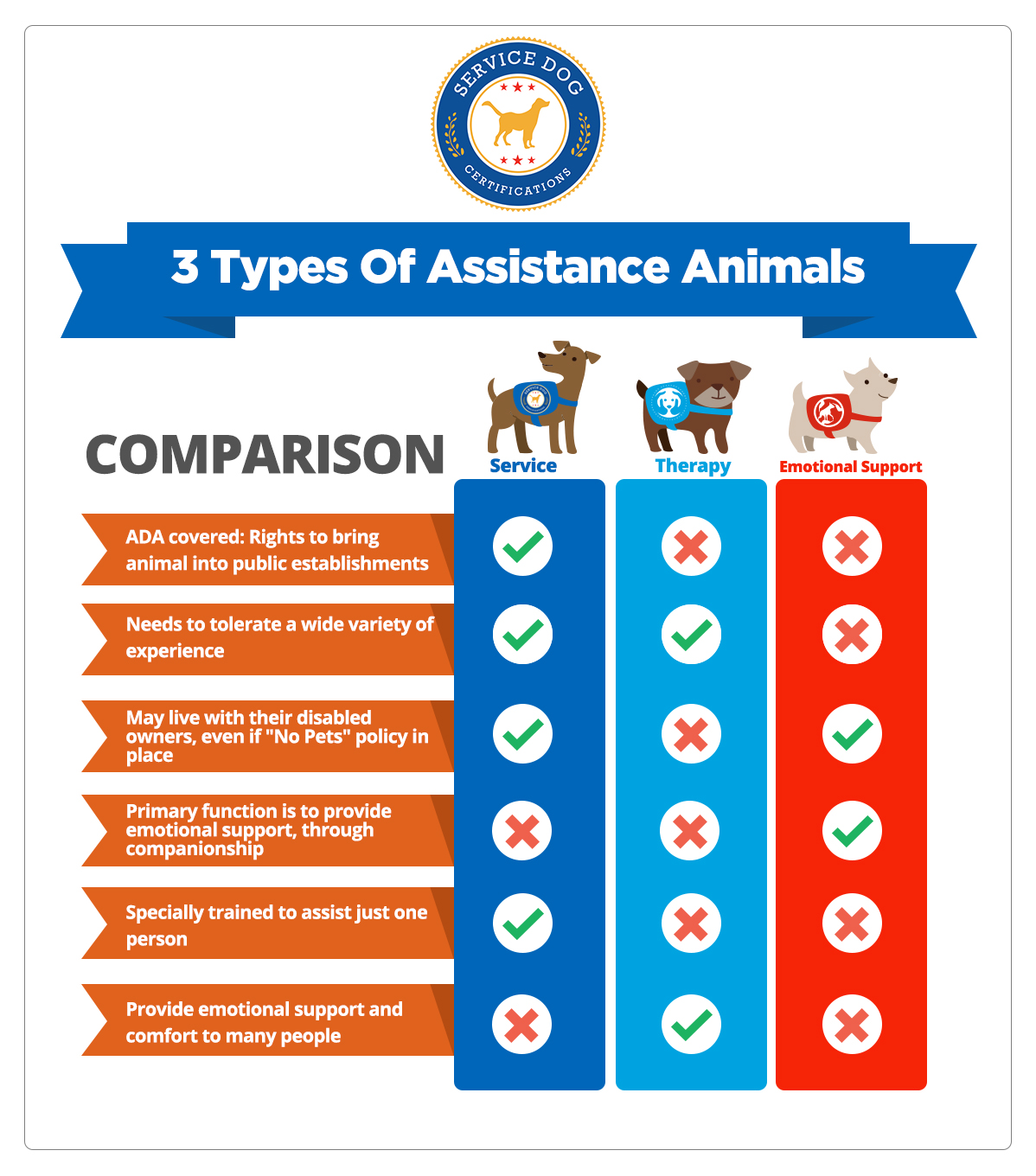
Serving as Both
In rare instances, a highly intelligent and well-trained service dog can function as a therapy dog. A service dog trained to assist their owner with mobility issues, for example, can work as a therapy dog when the owner is sitting. When the owner is at rest and doesn’t require help, the service dog can attend to other people as a therapy dog.
Because being both a service dog and a therapy dog requires a particular awareness of the needed roles, a dog performing both functions needs to gauge situations appropriately. This switch in behavior demands a level of intelligence that most dogs don’t possess.
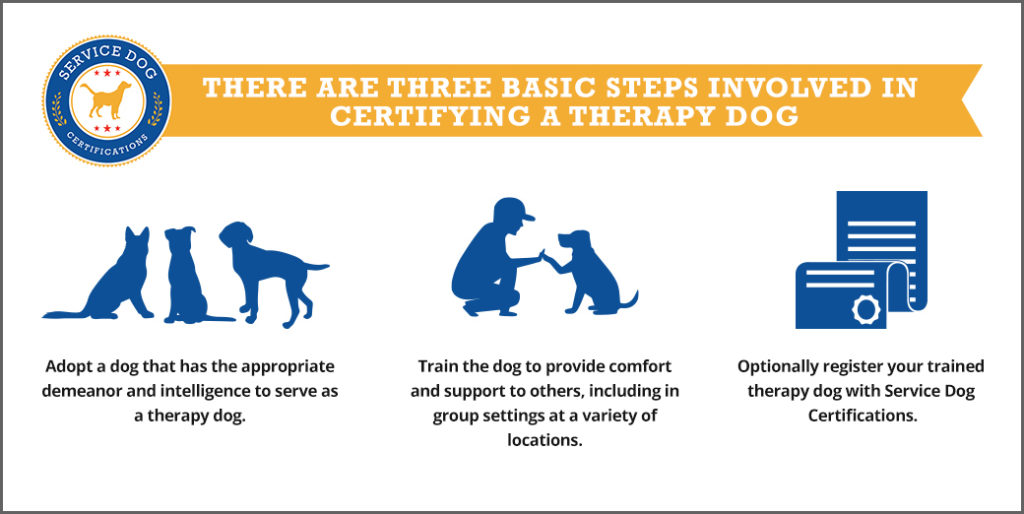
An Issue of Safety
Working as both a service dog and a therapy dog also creates some safety concerns that must be addressed. The leashes, harnesses, and other equipment that help a service dog fulfill their task might not be conducive to the therapy dog environment. Another safety consideration is the needs of the service dog owner. Service dogs should always be capable of fulfilling their duty as service dogs. The role of therapy must come secondary.
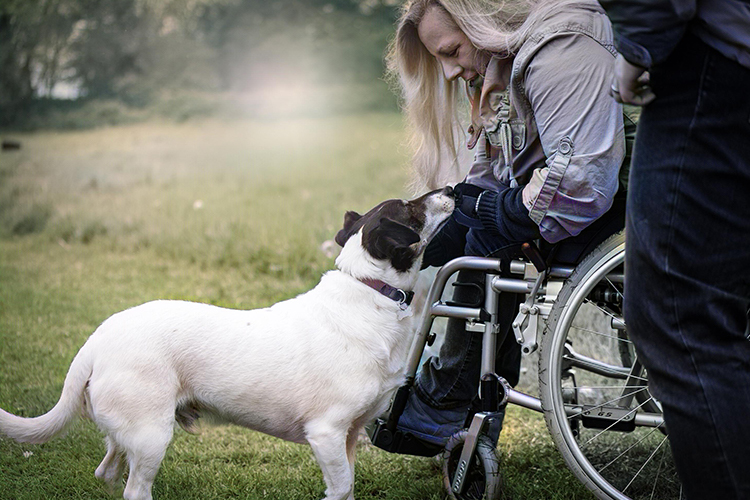
In Summary
Can a service dog function as a therapy dog? Yes, but with considerations. The environment should be safe for the service dog owner, the dog, and the people around them. Service dogs must be aware and trained to fulfill both roles, and the safety of the service dog owner should never be compromised. It takes an exceptional dog to fulfill both roles, and you’d be fortunate to have one!
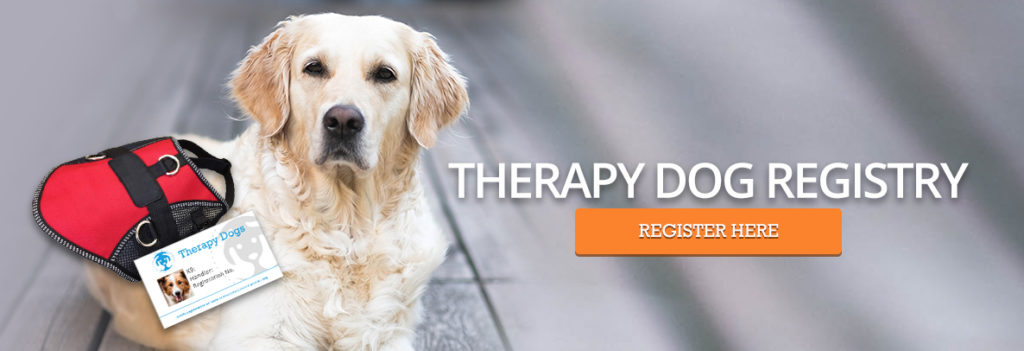
About the Author: The writing team at Service Dog Certifications is made up of folks who really know their stuff when it comes to disability laws and assistance animals. Many of our writers and editors have service dogs themselves and share insights from their own experiences. All of us have a passion for disability rights and animals.
5 comments
Leave a Reply Cancel reply
Latest Posts

Can you bring a service dog to a museum?
Yes, you can bring your service dog to the museum! All the major U.S. museums welcome guests with service animals in accordance with the Americans with Disabilities Act (ADA). There are some areas, however, that might be off-limits. Here’s what you should know if you plan to spend a day at the museum with your […]

Read More

How to Bring a Service Dog to Six Flags Magic Mountain
Service dogs are welcome at Six Flags Magic Mountain so long as they are, according to Six Flags, “trained to do work or perform tasks for people with disabilities.” Of course, your dog must be housebroken and remain on a leash or harness and under your control while at the park — and the park […]

Read More

When Stores Can Refuse Your Service Dog
According to the Americans with Disabilities Act (ADA), service dogs should be allowed into any store most of the time. A store owner can legally exclude a service dog if they are actively growling, snapping at, or frightening customers, or if the dog is obviously out of the control of its owner. Ordinary behaviors — […]

Read More


What breeds are best suited to being both a service dog and a therapy dog?
There is no “best” breed – it really depends on what task or job the service dog is being called on to perform, and what situations the therapy dog will be used in.
I am with furry friends four years and have a tag with her picture on, does that mean she is certified? Every year she gets cleared by the vet.
This is the first time.
To clarify, service dogs are not required to be “certified”. You can however optionally obtain a service dog certification after you have fully qualified for one. In order to be considered a service dog, your dog must be trained to perform one or more tasks relating to a disability.
I have a PSD due to extreme anxiety, depressiona and social anxiety. Although I do not bring him to work I am with him every second I am not working. He also functions as a therapy dog to volunteer in a special needs kindergaten school on Fridays. He can easily shift gears for both jobs, but not many dogs can do this. Hes definitly a special boy.